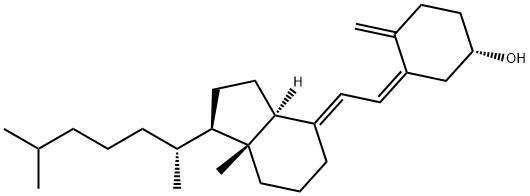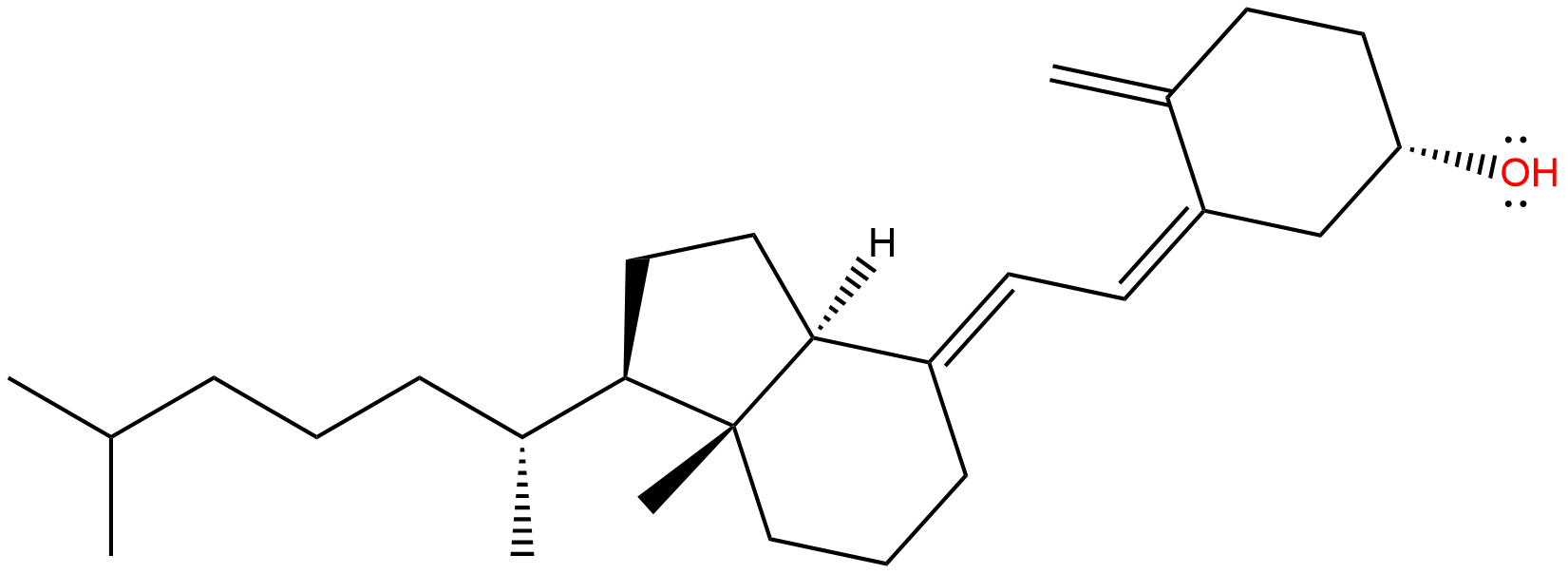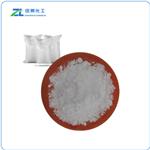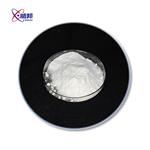
Vitamin D3
- Product NameVitamin D3
- CAS67-97-0
- CBNumberCB6104867
-
MFC27H44O
Lewis structure
- MW384.64
- EINECS200-673-2
- MDL NumberMFCD00078131
- MOL File67-97-0.mol
- MSDS FileSDS
Chemical Properties
| Melting point | 83-86 °C(lit.) |
| alpha | 105 º (c=0.8, EtOH 25 ºC) |
| Boiling point | 451.27°C (rough estimate) |
| Density | 0.9717 (rough estimate) |
| vapor pressure | 2.0 x l0-6 Pa (20 °C, est.) |
| refractive index | 1.5100 (estimate) |
| Flash point | 14 °C |
| storage temp. | -20°C |
| solubility | Practically insoluble in water, freely soluble in ethanol (96 per cent), soluble in trimethylpentane and in fatty oils. It is sensitive to air, heat and light. Solutions in solvents without an antioxidant are unstable and are to be used immediately. A reversible isomerisation to pre-cholecalciferol takes place in solution, depending on temperature and time. The activity is due to both compounds. |
| pka | 14.74±0.20(Predicted) |
| form | powder |
| color | White |
| Odor | odorless |
| biological source | synthetic (organic) |
| Water Solubility | <0.1 g/L (20 ºC) |
| Sensitive | Air & Light Sensitive |
| Merck | 14,10019 |
| BRN | 2339331 |
Safety
| Symbol(GHS) |
 
|
|||||||||
| Signal word | Danger | |||||||||
| Hazard statements | H300+H310+H330-H372 | |||||||||
| Precautionary statements | P260-P262-P280-P302+P352+P310-P304+P340+P310-P314 | |||||||||
| Hazard Codes | Xn,T | |||||||||
| Risk Statements | 26-24/25 -48/25 | |||||||||
| Safety Statements | 28-45-36/37 | |||||||||
| WGK Germany | 2 | |||||||||
| RTECS | VS2900000 | |||||||||
| F | 8-10-23 | |||||||||
| TSCA | Yes | |||||||||
| HS Code | 29362990 | |||||||||
| Hazardous Substances Data | 67-97-0(Hazardous Substances Data) | |||||||||
| Toxicity | LD50 oral in rat: 42mg/kg | |||||||||
| NFPA 704: |
|



